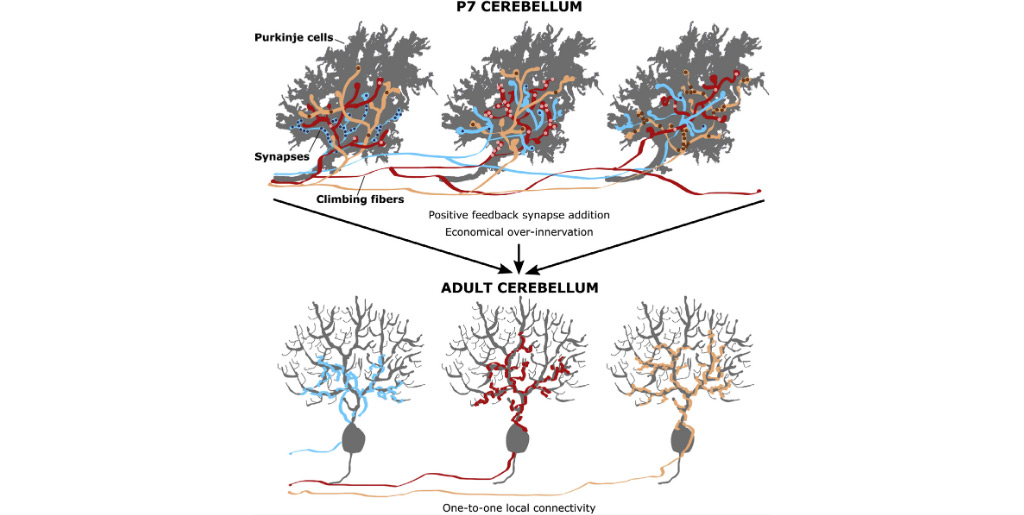
Developmental Rewiring between Cerebellar Climbing Fibers and Purkinje Cells Begins with Positive Feedback Synapse Addition
Cell reports, 2019.
During postnatal development, cerebellar climbing fibers alter their innervation strengths onto supernumerary Purkinje cell targets, generating a one-to-few connectivity pattern in adulthood. To get insight about the processes responsible for this remapping, we reconstructed serial electron microscopy data-sets from mice during the first postnatal week. Between days 3 and 7, individual climbing fibers selectively add many synapses onto a subset of Purkinje targets in a positive-feedback manner, without pruning synapses from other targets. Active zone sizes of synapses associated with powerful versus weak inputs are indistinguishable. Changes in synapse number are thus the predominant form of early developmental plasticity. Finally, the numbers of climbing fibers and Purkinje cells in a local region nearly match. Initial over-innervation of Purkinje cells by climbing fibers is therefore economical: the num-ber of axons entering a region is enough to assure that each ultimately retains a postsynaptic target and that none branched there in vain.